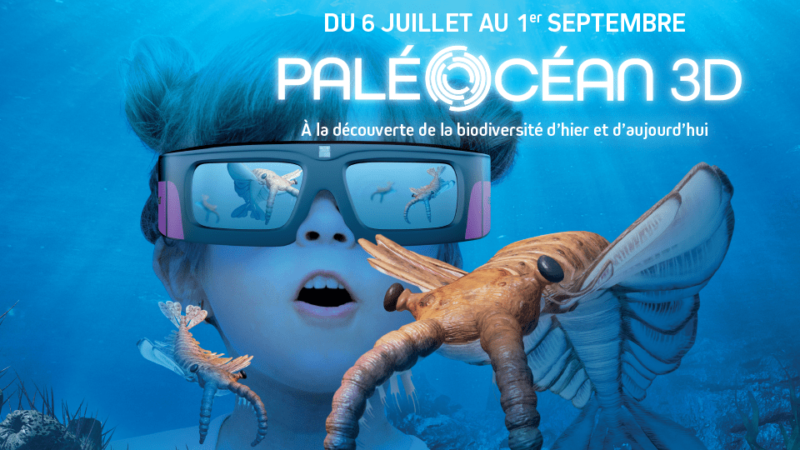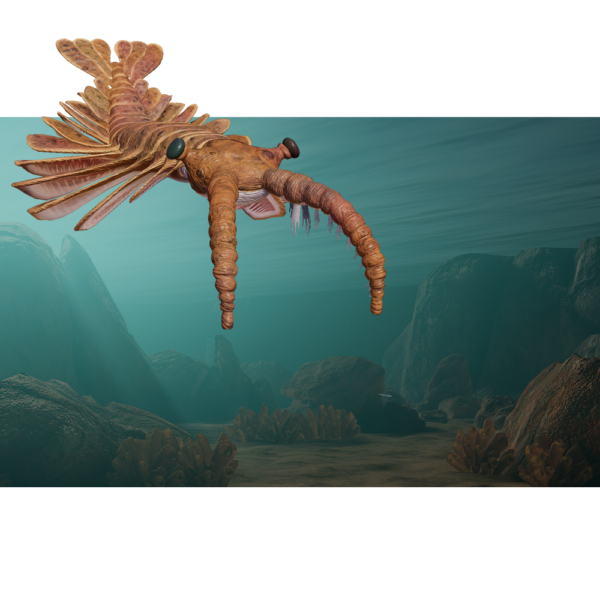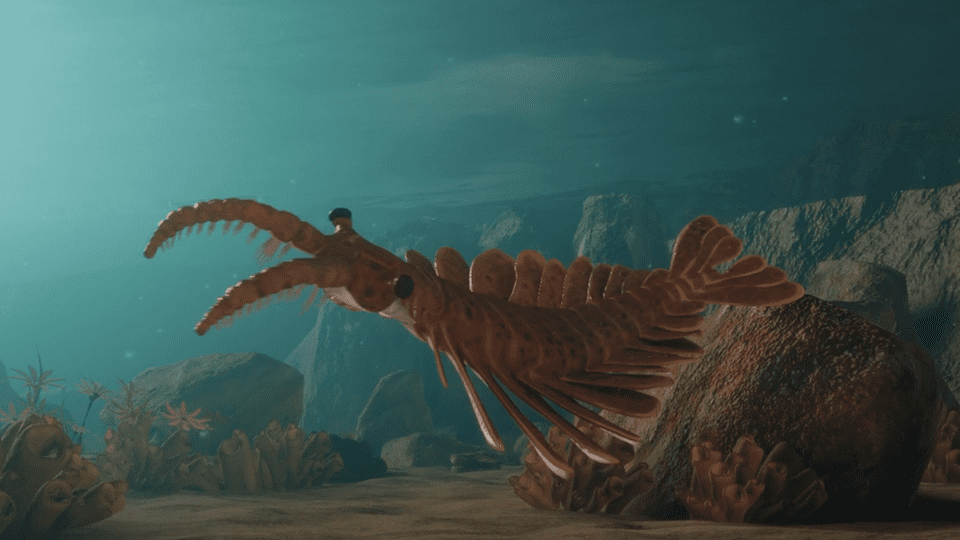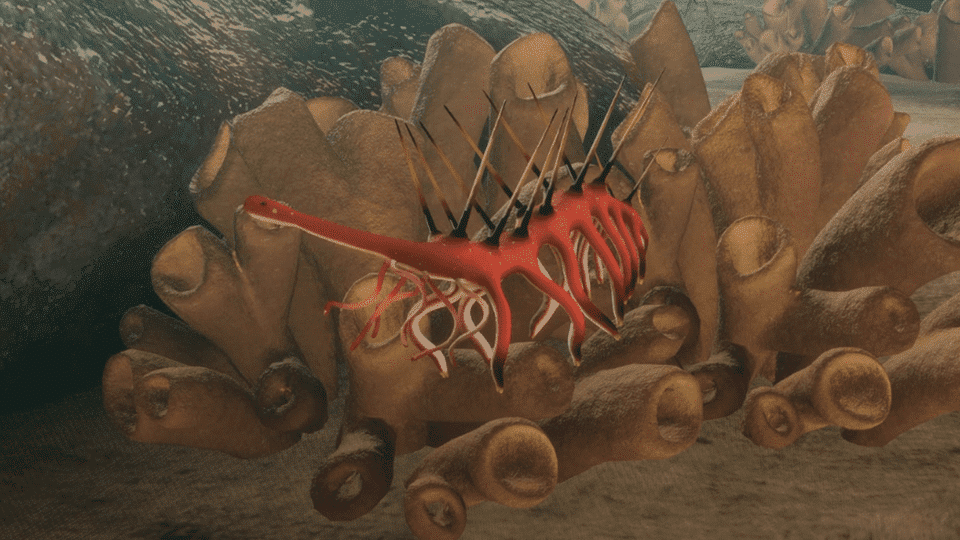News
PALÉOCÉAN 3D

From July 6 to September 1, step back in time and discover extinct marine animals in our new Paléocéan 3D animation.

discover lost animals and protect today’s living ones
During the Cambrian period some 505 million years ago, our planet resembled a mineral desert while the ocean was home to marine species with sometimes puzzling shapes. This period, sometimes called the ‘Big Bang of life’, is still considered today as an unequalled leap in the birth of species.
In 3D on a big screen and in the company of a scientific mediator, we invite you to discover extinct species such as the strange Anomalocaris prawn and the Hallucigenia worm which contributed, along with a whole host of other species, to the emergence of the anatomical structures which were essential to the development of our current animals.
It’s a wonderful way to understand the evolution of species and the vulnerability of our biodiversity.

WHAT IS ANOMALOCARIS CANADENSIS?
Its name is derived from the Greek ‘anomalo’, which means strange, and from ‘caris’, which means prawn.
Behind this friendly sounding name, this was a carnivore that could measure more than 1 metre long! Anomalocaris canadensis could control the appendages located at the front of its head like arms. When it attacked, it drove the short, sharp spines covering the ends of its appendages into its prey and transferred it to its mouth before devouring it.
Anomalocaris canadensis could be part of the original group that led to the development of the arthropod branch. Arthropods are characterised by a segmented body, an exoskeleton and jointed limbs. This group today includes spiders, prawns, insects and centipedes.
5 GOOD REASONS TO DISCOVER PALÉOCÉAN 3D
- Travel through time
- Understand how life appears and how some species disappear
- Marvel at the wealth of underwater fauna 540 million years ago
- Share a unique activity with the family
- Enjoy a rich experience and boost your awareness about protecting the marine environment
Despite many crises and periods of extinction, life has always found a way to produce the magnificent diversity that we see on our planet today. More than 8 million species inhabit our planet and more than 15,000 new species are discovered each year.
This diversity is now under threat due to climate change, artificialisation of soils, acidification of oceans, pollution etc. We all need to act now to preserve this fabulous biodiversity and to be able to bequeath it to future generations.
This activity is included in the price of your admission ticket to Océanopolis.









 4 tips to visit Océanopolis th...
4 tips to visit Océanopolis th... 









